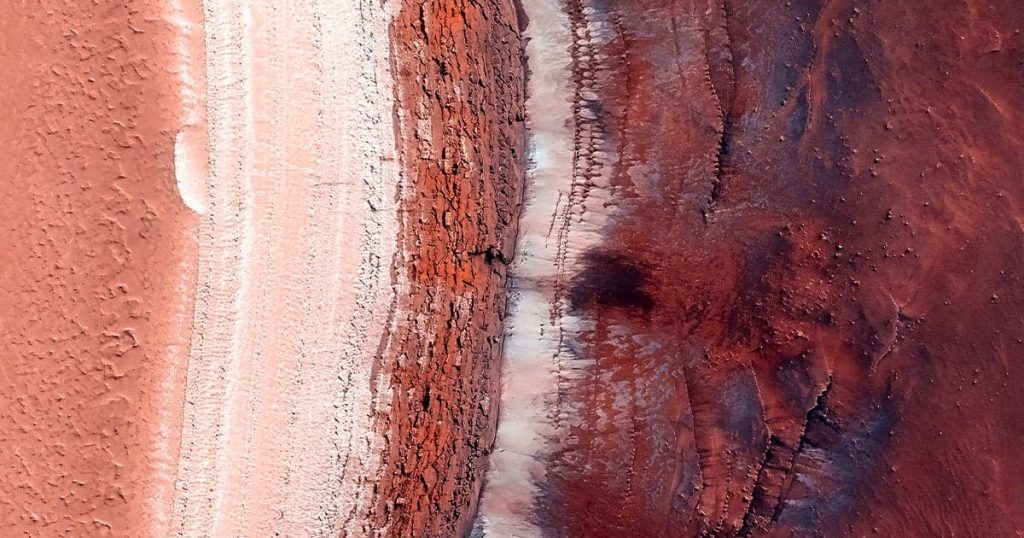
Life on Mars May be Trapped Under Ice, NASA Researchers Suggest (Image Credit: futurism-com)
It’s the perfect environment for microorganisms.
Ice Ice Baby
Researchers at NASA’s Jet Propulsion Laboratory are positing that Mars’ ultra-thick water ice deposits, which hold dark dust and snow drifts from past ice ages, could be key in discovering some form of life there.
This new study published in the journal Nature Communications Earth & Environment argues that the ice layers on Mars could be thick and dark enough from their dusty contents to block out solar radiation that gets in through Mars’ ultra-thin atmosphere.
According to the researchers’ computer modeling experiments, the ice may stay intact on the surface but melt within when the Sun hits it — and with harmful radiation effectively blocked, life-giving photosynthesis could occur as it does here on our planet.
On Earth, craters created by embedded dust particles causing the ice below to melt over time are known as “cryoconite holes.”
“Eventually, as these dust particles travel farther from the Sun’s rays, they stop sinking, but they still generate enough warmth to create a pocket of meltwater around them,” the JPL’s blog reads. “The pockets can nourish a thriving ecosystem for simple lifeforms.”
It’s a deceptively simple concept — though the researchers are not making any bolder proclamations yet.
No Promises
To be clear, nobody involved in the study is saying anything definitive about the possibility of life on Mars.
“We are not stating we have found life on Mars,” Khuller told Space.com, “but instead we believe that dusty Martian ice exposures in the mid-latitudes represent the most easily accessible places to search for Martian life today.”
If Mars is, as some researchers hypothesize, anything like Earth, these pockets of liquid water could hold life.
“People have found microorganisms that live in these shallow subsurface habitats on Earth,” the JPL postdoc told Space.com. “The microorganisms typically go dormant in the winter when there is not enough sunlight to form liquid water within the dusty ice.”
To test out this hypothesis, Khuller and his team plan to simulate Mars’ dusty ice at JPL and map out which parts of the Red Planet are most likely to contain these shallow pools of meltwater.
From there, robots (and eventually humans) will take the lead in excavating and potentially sampling these water pockets to see what they might contain.
More on Martians: NASA Says Its Rover Has Discovered a “Potential Biosignature” on Mars





